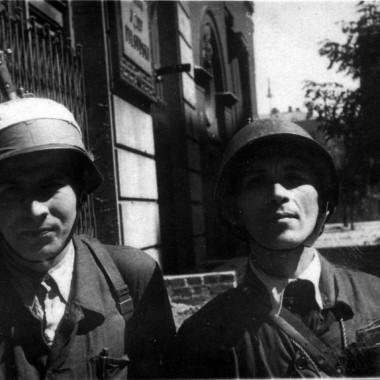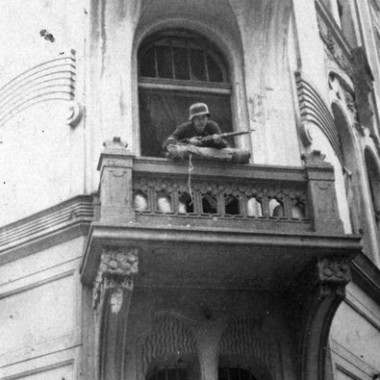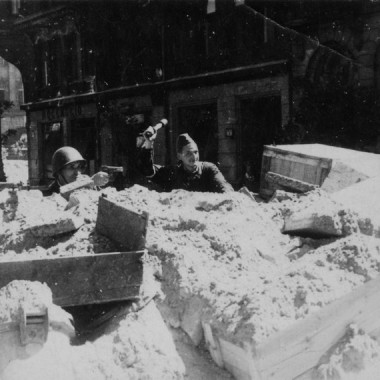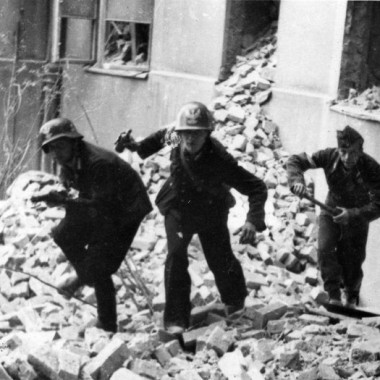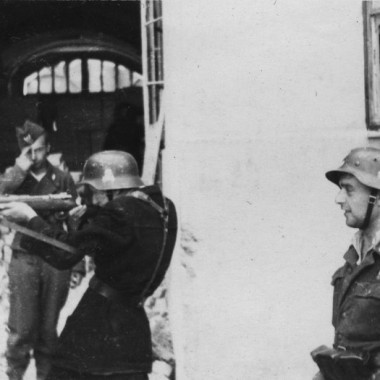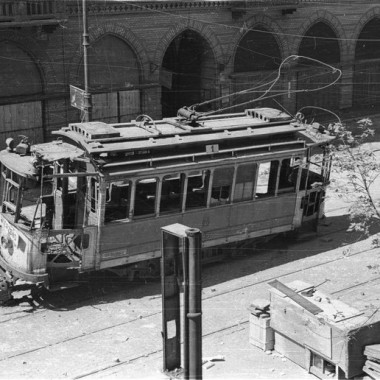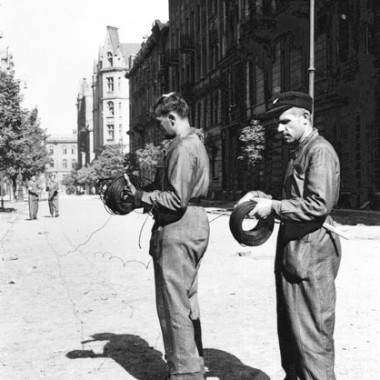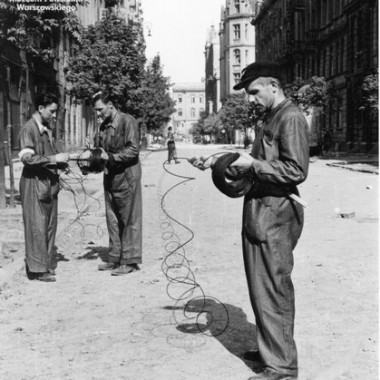2Lt. Eugeniusz Lokajski ”Brok” was born on 14 December 1908 in Warsaw. At the age of 16, Lokajski joined “Warszawianka” Sports Club, where he trained in running, swimming, and football. In 1928, he passed his final secondary education exam at the Mikołaj Rej Evangelical Middle School and began studies at the Warsaw School of Economics. In 1931-1932, he carried out his his military service at the Infantry Reserve Cadet School in Zambrów. Having returned to Warsaw, he took up studies at the Central Institute of Physical Education (CIWF), where he became an assistant and instructor of athletics in 1939. During that time, he also worked as a physical education teacher at his former middle school. In 1934-1937, he had many sport successes to his credit, including Polish championship in javelin throw (1934); world vice championship in pentathlon (Budapest, 1935); Polish record in javelin throw (1936, unbroken for 17 years); participation in the 1936 Summer Olympics in Berlin; first place in javelin throw in the athletics trimatch Greece – Poland – Czechoslovakia held in Athens (1937). In September 1939, he was a platoon commander in the 35th Infantry Regiment in the Brześć area. Captured in October 1939, Lokajski escaped to Warsaw. In the first years of the occupation, he hid in Paprotnia near Warsaw, working as a labourer, and later set up a photographic studio at Berezyńska Street in Saska Kępa, earning a living mainly as a theatre photographer. In 1942, he opened a photographic studio in his mother’s apartment at 2 Łucka Street in the City Centre. He started his work for the underground as a physical education instructor at an establishment at the Vistula River which had been officially named as Punkt Mycia i Kąpieli (Point of Washing and Bathing) to deceive the German authorities, which banned teaching PE to Poles. He also taught at a clandestine classes for the Central Institute for Physical Education (CIWF). During that time, he worked officially as a gymnastics teacher at the Mikołaj Rej Private Primary School. Sworn in as a Home Army soldier in January 1944, he replaced his brother, Józef, who had been killed on 23 December 1943 during a clash with German troops. Lokajski became a platoon commander in the 3rd Praga Company of the I Battalion in the Home Army’s Sub-District III Rembertów, District VII “Obroża”. During the Rising, he served as a liaison officer in the “Koszta” Company, of which he became the Commanding Officer on 30 August. He was licensed “to carry and use a photography and film camera”. Lokajski took his photographs mainly in the City Centre, and developed them in the apartment owned by his sister, Zofia Domańska, who stored his negatives. His film footage showing the assault on the PAST (Polish Telephone Joint-stock Company) building, a major German stronghold, was screened in the “Palladium” cinema on 21 or 22 September. On September 25, with the Rising nearing its capitulation, he was assigned to the Home Army Headquarters to take photos for false documents which were to help insurgents evacuate the city with the civilian population. That day, Lokajski was killed in an air raid of the townhouse at 129 Marszałkowska Street, where a photo store was located.
In his photographs, Lokajski managed to capture probably all of the most important aspects of the Warsaw Rising: insurgent battles and everyday civilian life, barricades and field hospitals, insurgent weddings and funerals of the victims of German bombardment. With a Leica camera, captured in the first days of fight, he documented the streets of City Centre North: from Królewska Street to Napoleon Square, from Tamka Street to Bagno Street. The largest set of his photographs depict the storming of the PAST building on August 20. His photographs often appeared in post-war publications. Lokajski was the author of the most recognisable portraits of insurgents, dispatch runners and paramedics.





